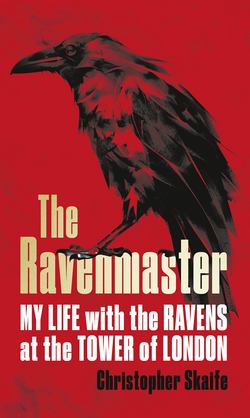Читать книгу The Ravenmaster: My Life with the Ravens at the Tower of London - Christopher Skaife - Страница 9
Оглавление3
The Rules
I am, as far as I’m aware, only the sixth Ravenmaster ever to have been appointed at the Tower. Before that, caring for the ravens was part of the job of the Yeoman Quartermaster. Like a lot of our great traditions in Great Britain, the role and indeed the title of Ravenmaster is in fact a recent invention. The story goes that when Henry Johns was appointed Yeoman Quartermaster just after World War II, some of the old Yeoman Warders used to joke that he was raving mad – so keen was he on caring for the birds – and so he affectionately became known as the Raving Master instead of the Quartermaster. It wasn’t until John Wilmington took over from Henry Johns in 1968 that the more sane-sounding title of Raven Master became official, and not until some years later – doubtless due to some clerical error in a back office somewhere – that the Raven Master became known as the Ravenmaster.*
I lead a team of Yeoman Warders here at the Tower who assist me in caring for the birds. They are known as the Ravenmaster’s assistants. I call us Team Raven. Together we are responsible for looking after the ravens 365 days a year. There’s never a day when there’s not a Yeoman Warder on duty responsible for the ravens. They are possibly the most cared-for – and certainly the best-loved – birds in the world.
There are a few simple rules about caring for the Tower ravens that have been passed down to me over the years by my illustrious predecessors, and which I in turn like to pass on to my assistants. The theory goes that if you follow these rules you’ll remain safe around the ravens, and they’ll remain safe around you.
DO NOT hurry the ravens.
DO NOT attempt to change the pecking order.
DO NOT try to cut corners.
DO remain calm at all times.
DO allow the ravens to follow the same routine every day.
DO prepare for chaos if you break any of the above rules.
It goes without saying that I have failed to observe these rules many times – and that the job of Ravenmaster is in fact rather more challenging and complex than following a few basic rules.
As Ravenmaster you have to be able to think on your feet. Over the years I’ve had to deal with bird-on-bird attacks, bird-on-human attacks, human-on-bird attacks, stolen goods, snatched food, biohazard concerns, security problems, disease, death, and tragedy. On a daily basis my job involves dealing with children, tour guides, VIPs, journalists, amateur historians, professional historians, bird-lovers, and all the other assorted visitors to the Tower. By my calculation, in the height of the summer, when our visitor numbers are at their peak, I am photographed about three or four hundred times a day, every day: I reckon the ravens and I have probably featured in someone’s family album in every country in the world. For the love of ravens I’ve nearly drowned, I’ve very nearly fallen off tall buildings, and many’s the time I’ve had to risk my reputation and stick my neck out to try to do what I think’s best for the birds. And it’s not as if they’re exactly grateful. They are not my pets. They do not do tricks. They do not ride unicycles. They do not speak Latin. They don’t necessarily do what I tell them to do – which can be more than a little embarrassing. There was the time one of our ravens affectionately pecked a cameraman on the back of the leg during a television interview about the Tower, for example: that caused a bit of a commotion. They do not perform on cue. The Tower ravens are big, powerful, unpredictable creatures, with a savage bite, who roam freely about the Tower and who have the ability to fly off at any moment if they so desire.
So, you have been warned. You know the rules. Now it’s time to meet the ravens.
* For a full list of Ravenmasters, see the Appendix.
